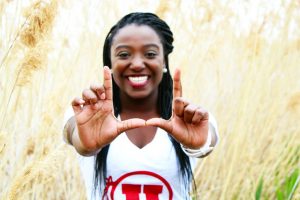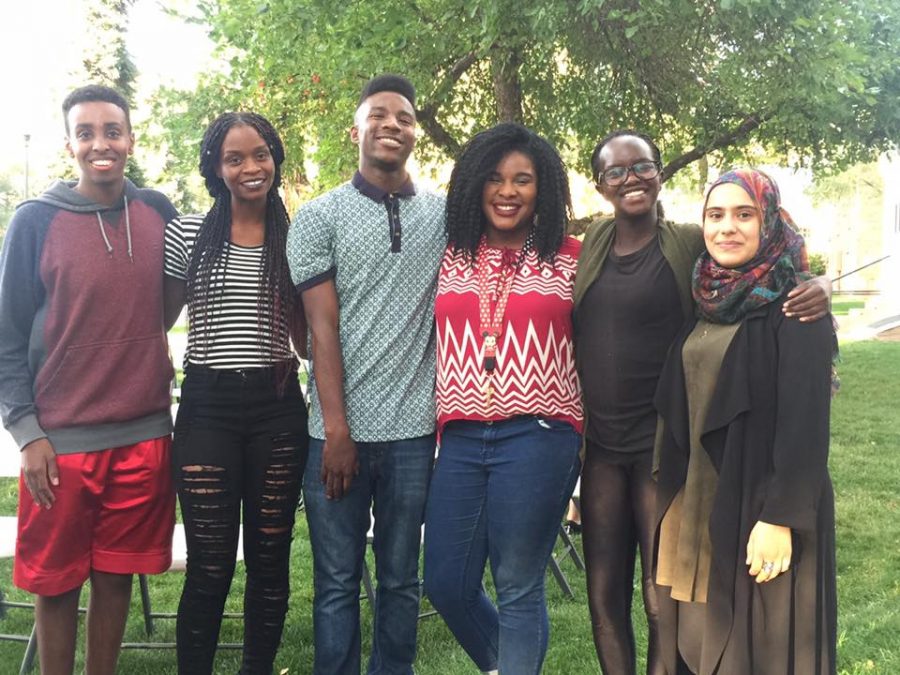Neither the University of Utah nor the state of Utah are places that typically come to mind when examining the issues faced by black students. However, Barbara Kufiadan of the U’s Black Student Union, wants the U to know, “There are black students on campus!”
Kufiadan, a pre-med sophomore studying health promotion and education, is a conference chair for a high school chapter of the Black Student Union, a nationwide group aimed at giving representation to black students.
The U’s chapter exists to “stimulate the intellectual, political, cultural and social growth of all Utah Students,” according to the group’s mission statement.
Kufidan said that although there “may not be too many” black students at the U, they exist and their problems and presence matter.
“We are here,” she said, “and our voices, concerns and history must be known.”

Statistically, the U has few black students. Of the estimated 23,794 undergraduate students enrolled at the U, only 322 of them identify as black or African-American. That is 1.3 percent of the student body, which is the same as the percentage of black residents in the state of Utah, according to data from the United States Census Bureau.
The effect of these low numbers, Kufiadan said, is that the voices of black and minority students go unheard on campus.
“White students do not realize the different challenges that black students have to face,” she said, like the stigma that black students “should not be there unless [they] are on athletic scholarship.”
Such stereotypes, Kufiadan said, are unjustified and have the consequence of perpetuating false ideas about the identities of black students and people.
“It’s tough standing out of the majority culture,” agreed Jasmine Robinson, the treasurer of the Black Student Union. Being a black student at a predominantly white institution comes with baggage, she said.
“I look around my classrooms and at my teachers and most of them don’t look, act or think like me,” Robinson said. “It’s difficult navigating conversations and hard topics as many of my peers don’t understand my viewpoint or where I’m coming from.”
Robinson said she often experiences misconceptions and ignorance in her day-to-day interactions with others on campus. Handling this, can be strenuous.
“It can get tiring trying to find the right way to navigate those conversations,” Robinson said. “Whether it’s through a microaggression, rude comment or a lingering stare, it can be a lot to handle sometimes.”
 The Black Student Union fights against these challenges, mistreatments and misconceptions. Alexis Baker, president of the U’s chapter, said she feels the group provides her with a voice at the school. She acknowledges, however, that not all black students share this sentiment.
The Black Student Union fights against these challenges, mistreatments and misconceptions. Alexis Baker, president of the U’s chapter, said she feels the group provides her with a voice at the school. She acknowledges, however, that not all black students share this sentiment.
Baker said an important aspect of the group is its attempt to represent multiple identities and perspectives and showing that “blackness is not a monolith.”
“The purpose of the Black Student Union is to provide a safe and brave space for black students on campus,” Baker said. “The group stands for and tries to represent all identities and aspects of black students represented on campus.”
Kufiadan expanded on the idea that diverse representation is needed. “I want the different dimensions, intersectionalities and representations of black and African cultures to be prevalent on campus.”
Feelings on the U’s commitment to ethnic diversity and black representation vary throughout the group. Amerique Phillips, a freshman in political science and ethnic studies, said she believes the school’s stance on diversity “started as shallow” but has gradually become “real and significant.”
Phillips said she has seen recent strides towards racial representation at the U. For example, students of color are broadcasted frequently in university advertisements, even though these students only make up a small minority of the student body.
This gives the impression that black students have a greater classroom presence than they do, she said. In effect, the idea of a representative and integrated classroom becomes normalized.
Baker believes administrators and faculty are beginning to listen to the concerns of black students. “However, we still have a ways to go for students of color on campus in general,” she said.
Not all students are as optimistic about the U’s commitment. At a forum on racial climate and systemic racism in January, a black student criticized the U for not being empathetic to the struggles of minority students. The student’s comments were met with applause by audience members.
The website collegefactual.com uses demographic data to grade the ethnic diversity at various institutions. They labeled the U as being “on par with the national average.” Within the state, this rating is also given to Dixie College, Westminster College and Weber State University.
Utah State University, which has 208 black students, making up 0.9 percent of the student body, and Brigham Young University, with 136 black students and 0.5 percent of the student body, are both listed as “below average.” The same is true of Southern Utah University and Snow College.
The Office of Equity and Diversity said it is committed to creating a welcoming environment to students of all backgrounds. Neelam Chand, the office’s director of marketing and development, said there are improvements to be made and that the U is open to making them.
“I don’t think the work is ever done,” Chad said.
Kufiadan said she wants white and non-minority students to be aware of this.
“I think it’s really easy to get caught in the day-to-day routine of college and become completely ignorant to what’s going on around you,” Kufiadan said.
Students should fight against these urges of complacency and disinterest, she said, and make a conscious effort to recognize, reform and combat the struggles students of color face.
The Black Student Union meets on Mondays at 1:00 p.m. in the Center for Ethnic Student Affairs (CESA) in the Union building, room 235. The group can be contacted through their Facebook page, on Twitter at “@UofUBSU” or by email at [email protected].
@misterclovis


